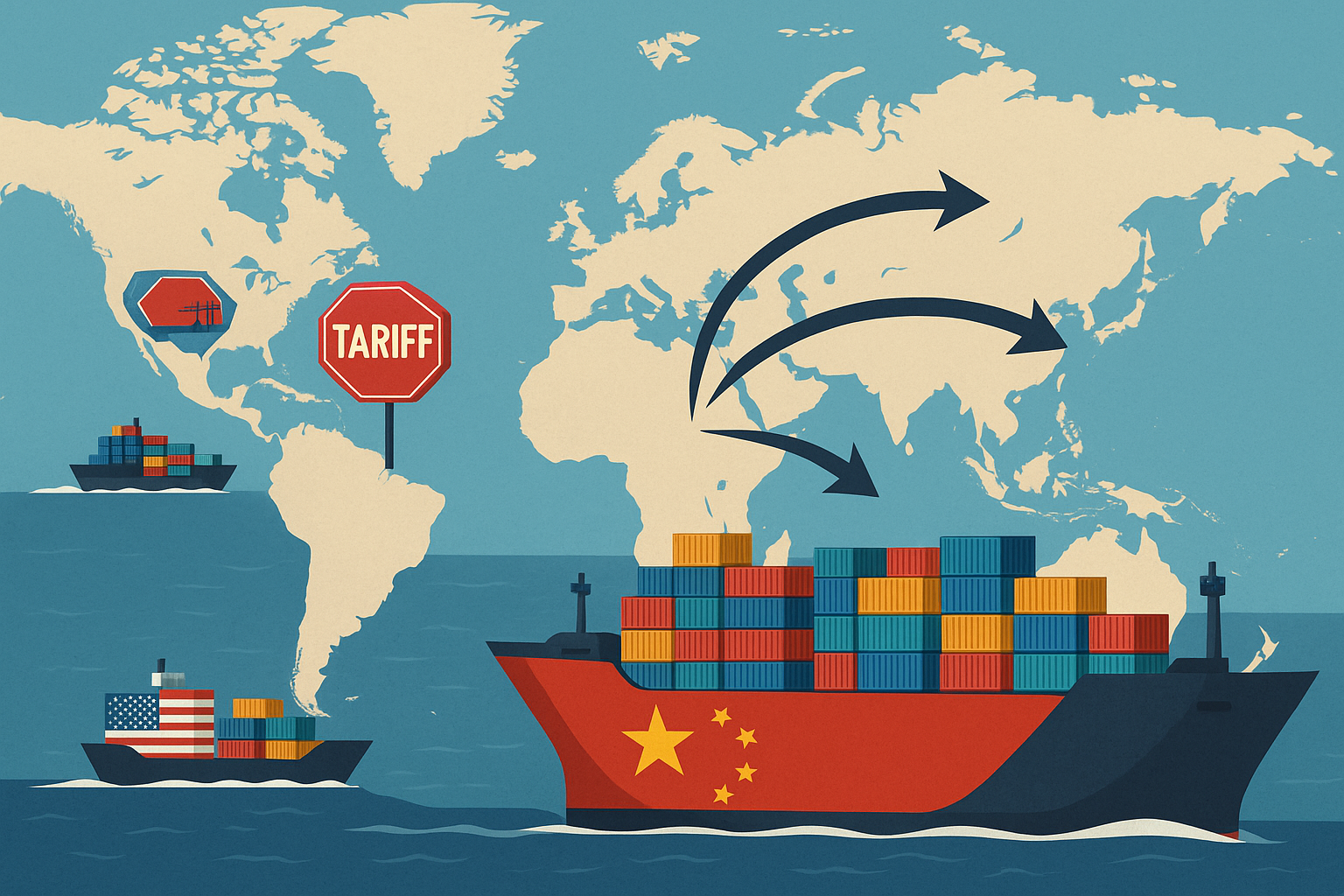China’s exports grew 4.4% in August compared with a year earlier. This marked the slowest pace in six months and fell short of economist forecasts. Imports rose only 1.3%, also missing expectations. Both figures point to weaker momentum in trade, as earlier boosts from the tariff truce with the U.S. fade away. Analysts say the slowdown reflects not only tariffs but also the high base of comparison from last year, when shipments had surged. For policymakers, the weaker data raises new concerns about how long exports can hold up without stronger domestic demand.
U.S. Trade Tensions Intensify
The United States remains China’s largest single-country export destination. Yet, exports to the U.S. dropped sharply—down 33% in August from a year earlier. Imports from the U.S. also fell, by 16%. The two countries extended their tariff truce in mid-August, but talks have produced little progress since. President Donald Trump has threatened further tariffs, including penalties of up to 200% on certain goods. Economists warn that once U.S. duties pass 35%, they become prohibitively high for many Chinese exporters. This leaves Beijing facing a dilemma: accept heavy losses in its biggest market or shift focus elsewhere at a rapid pace.
China Looks Abroad for Trade Partners
While U.S. demand weakens, China has turned aggressively toward other markets. Shipments to Southeast Asia rose more than 22% in August. Exports to Africa and Latin America also surged by around 25% and 6% respectively. Trade with the European Union grew by more than 10%. These gains highlight how Chinese exporters are racing to capture new customers, often lowering prices to remain competitive. But no region can match the U.S. in consumption power. For decades, America absorbed over $400 billion in Chinese goods annually. Even as China’s diversification strategy pays off in numbers, the gap left by U.S. demand remains too large to fill completely.
Domestic Challenges Weigh on Trade Outlook
China’s economy is also grappling with weak domestic demand. The real estate slump continues to drag on growth. Job insecurity is rising, and consumer sentiment remains low. Policymakers have tried to support spending through programs like subsidies for cars and appliances. Yet many local governments have run out of funds for these initiatives, slowing their impact. Analysts expect the People’s Bank of China to cut interest rates in the coming weeks to ease pressure. Still, officials are cautious about launching large-scale stimulus, as they remain focused on curbing industrial overcapacity. Deflation risks add another layer of complexity, with producer prices falling nearly 3% in August.
What Lies Ahead for China-U.S. Trade
The next few months could prove critical. If Washington follows through on new tariff threats, Chinese exporters will face even higher hurdles. Transshipment routes through third countries, once used to dodge U.S. duties, are now under tighter American scrutiny. At the same time, Beijing is weighing whether to inject more fiscal support to stabilize growth. Investors are watching closely as China prepares to release new data on retail sales, industrial output, and unemployment. For now, China’s trade model is under strain. The U.S. market is shrinking, alternative partners cannot fully compensate, and domestic consumption remains soft. The result is an export engine that still runs but increasingly sputters under external and internal pressures.
